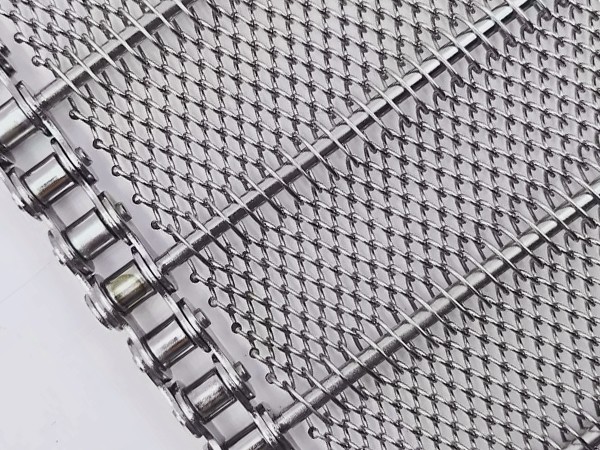
Selecting the Right Wire Link Conveyor Belt for Your Industry
Food and bakery businesses are fast-paced industries where efficiency and hygiene are critical. Metal conveyor belts are essential for optimizing production procedures. They are vital to the industry because they are strong, hygienic, and resistant to high temperatures. This article covers the different types of metal conveyor belts, along with their benefits and real-world uses. It tries to show why these methods are essential to successful bakeries and food industries.
Metal Conveyor Belts’ Crucial Function
Metal conveyor belts are the best option for facilities that process and bake goods. They satisfy the strictest requirements for food safety and provide exceptional durability and cleanliness. Their easy-to-clean and maintain design guarantees that food safety regulations are satisfied. Because of their great adaptability and wide temperature tolerance, these belts are perfect for all phases of food preparation, from freezing to baking.
Types of Metal Conveyor Belts for Use in Bakeries and Food Processing
Belt Conveyors with Flat Wire
Because of its well-known flat surface area, flat wire conveyor belts are perfect for moving goods that require stability while being processed. They offer superior drainage and ventilation and are often constructed of steel or stainless steel. These belts are frequently used in baking, chilling, freezing, and drying applications because of their remarkable strength and simplicity of cleaning.
Balanced Weave Conveyor Belts
Conveyor belts with balanced weaves are made of left- and right-hand spirals that are joined to form a tightly woven, balanced structure. Because of its extraordinary strength and flexibility, this design is perfect for moving goods that vary significantly in size and weight, from light to heavy and small to massive. Balanced weave belts are not only heat-resistant but also easy to maintain and appropriate for frying, baking, and chilling.
Chain Link Conveyor Belts
Conveyor belts with Wire Link Conveyor Belt use an easy-to-use mechanism. They are chains with rod links between them, held up by sprocket wheels. These belts are robust, long-lasting, and able to support significant loads, making them ideal for transporting large, bulky things during baking and chilling. Additionally, their open mesh design offers superior ventilation and ease of cleaning.
Belt Conveyors with Wire Mesh
Wirebelt conveyor belts with wire mesh are well-known for their open mesh design, which makes cooking, cooling, and ventilation more effective. Because these belts are composed of stainless steel or other alloys that are resistant to corrosion and high temperatures, they are perfect for use in food processing applications like baking, roasting, frying, and cooling. Furthermore, cleaning and upkeep are a breeze because of the open design.
Spiral Conveyor Belts
Because spiral conveyor belts can move goods in both uphill and downward spirals, they are ideal for vertical transportation in situations where there is a shortage of space. When space is limited, they are essential for cooling and baking applications. These belts can handle a wide range of products, including heavy and little ones. Their strength, flexibility, and resistance to high temperatures make them highly valued.
Plate Link Conveyor Belts
Plate link conveyor belts are a reliable and flexible solution for transferring cargo. They consist of metal plates attached by hinges or chains. When handling heavy or sharp materials that could damage other types of conveyor belts, these belts perform exceptionally effectively. Because of their robust design, they perform well in baking, frying, and chilling applications, especially where impact or abrasion resistance is needed.
In Summary
Because each type of metal conveyor belt has unique benefits for food and bakery operations, selecting the right one for a given application is essential. Enhancing productivity, product quality, and safety in your operations can be achieved by implementing the appropriate metal conveyor belt. These vital tools in the food production process—whether it’s the stability offered by flat wire belts, the adaptability of balanced weave belts, or the space-saving nature of spiral conveyor belts—will continue to advance alongside technology and materials, ensuring their position at the forefront of hygienic and thriving food and bakery operations.







